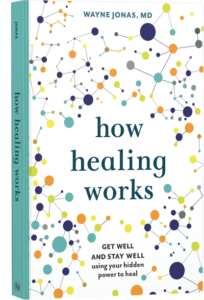There are many instances of successful merges between faith-based care and health care which reveal a substantial pool of best practices for confronting the challenging work of bridging the gap.
As we’ve seen this year, more and more people are seeking different ways to remain healthy and take part in healing environments—wherever they may be. Certainly, the healthcare system is carrying the load treating those impacted by COVID-19 but faith and religion can be a crucial element in supporting social relationships and, in turn, protecting our mental health. Many houses of worship are even live streaming their regular services, so family members and friends can watch from separate locations while enjoying the rituals and messages together.
No matter the specifics, the combination of faith and medicine can be an effective method for treating patients, especially at a time when our safety and well-being are even more at risk.
The following are some of the challenges in creating faith-health collaborations, and how best to address those challenges.
Definitions and Terminology
One of the major challenges in creating faith-health collaborations involves definitions and terminology. The concepts of “communities of spirit” and “faith-based,” as well as “whole person” and “integrative health,” are attractive—but these terms need clear definitions. What are the core components of a whole person that need to be addressed if humans are to flourish? Could faith and health care communities establish a simple set of dimensions for what we consider a whole human being? Perhaps clearly agreeing that humans consist of at least mind, body, spirit, and social dimensions is a start. Then we can agree that providing “whole-person integrative health care” means taking all these dimensions into consideration, regardless of one’s professional lens.
Creating a Common Language
Having common language for communication between faith and health communities is also key. Do “love” and “social support” intersect and have similar goals? How about “convening” and “community”? At a recent workshop that focused on faith-health care, an attendee spoke of the continuous challenge of attending to the intangible (e.g., prayer, belonging, compassion) and of needing to highlight the negative health aspects of activities that can come from both faith and health communities. For example, one speaker pointed out the negative aspects of some religious behaviors, such as “judgment, exclusion, theological ideas that demean . . . or frighten people,” and the negative aspects of medical treatment behaviors that perpetuate the racial and ethnic disparities in poor outcomes and low-quality care. It is critical for both sides to understand their strengths and weaknesses.
Answering the “Why”
Repeatedly returning to the “why” of any collaboration is essential. Isn’t the answer to that “why” always to enhance the health, well-being, and human flourishing of all people? Another workshop attendee commented on the moral incongruity of faith-based health care organizations acting on “the impulse to garner resources and market share in communities at the expense of resources for other key determinants of health, such as adequate housing, education, and so forth”—contributing to a health care industry that struggles to improve population health. That observation is key to better aligning resources to help population health strategies succeed.
Finding a Common Moral Ground
Do health care and faith-based care have a common moral basis that guides both fields toward enhancing population health and well-being? Or do they have different goals that conflict and interfere with each other, leaving the person to contend with only the negatives from both faith care and health care? Hospitals may find themselves in competition with faith-run community health centers (e.g., competition for patients who could visit the emergency department or use primary care services). This competition puts the two immediately at odds, rather than fostering collaboration that could be mutually beneficial.
If faith-based health care prevents the need for high-cost medical industry in the same city, will the more powerful health care organizations restrict the growth and delivery of faith-based health care? So often, world-class health care organizations and hospital systems sit right in the middle of settings for some of the worst health disparities in the country. This is a health-faith issue that needs to be more explicitly addressed. Faith-health collaborations should talk about the imperatives of both the faith and health communities—be they moral or economic—and how those imperatives can be leveraged to work together on a larger scale to ensure universal access to whole-person health and well-being services for all.
As community, government, and business leaders become aware that health and well-being come primarily from factors outside the medical environment, more partnerships between faith-based and health care organizations like those presented at this workshop will hopefully emerge.
Adapted from “Faith-Health Collaboration to Improve Community and Population Health” by Wayne B. Jonas, MD (Healing Works Foundation) and Rev. Maeba Jonas, MDiv (Johns Hopkins University), published by the National Academy of Medicine on August 12, 2019. You can read the full article here.

Your Health Into Your Own Hands
Drawing on 40 years of research and patient care, Dr. Wayne Jonas explains how 80 percent of healing occurs organically and how to activate the healing process.

